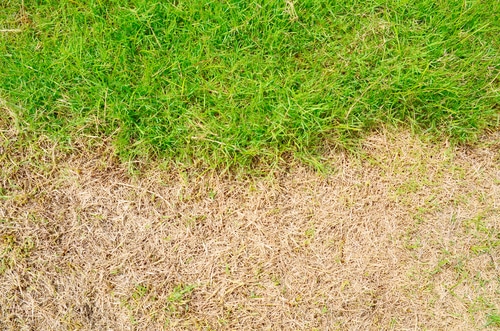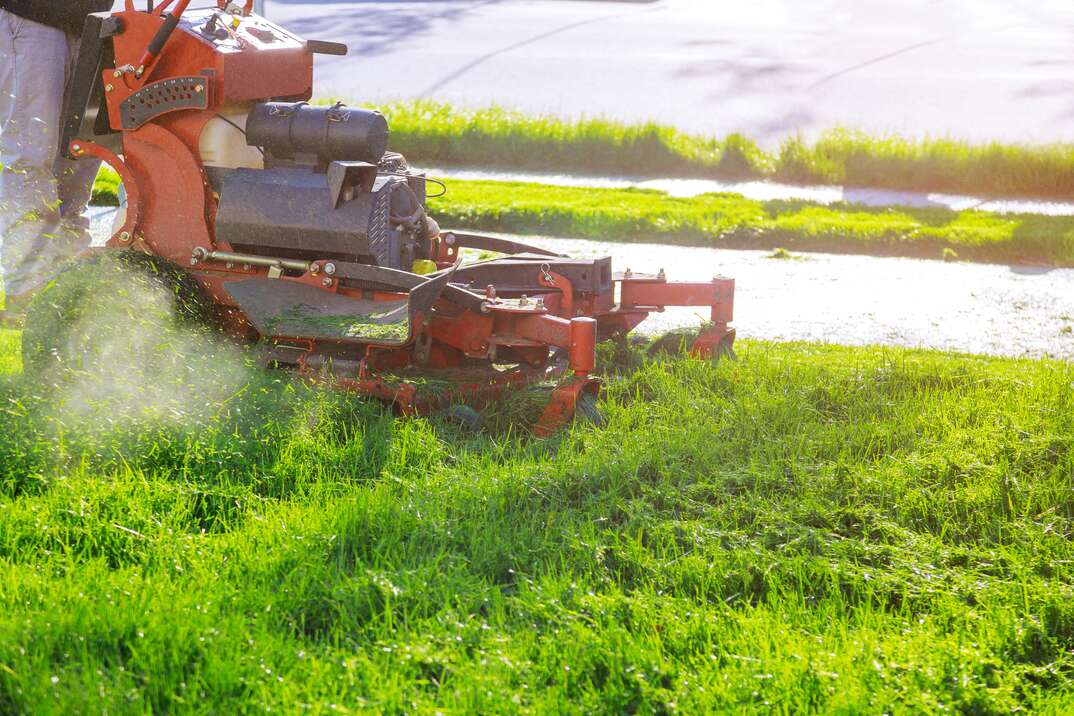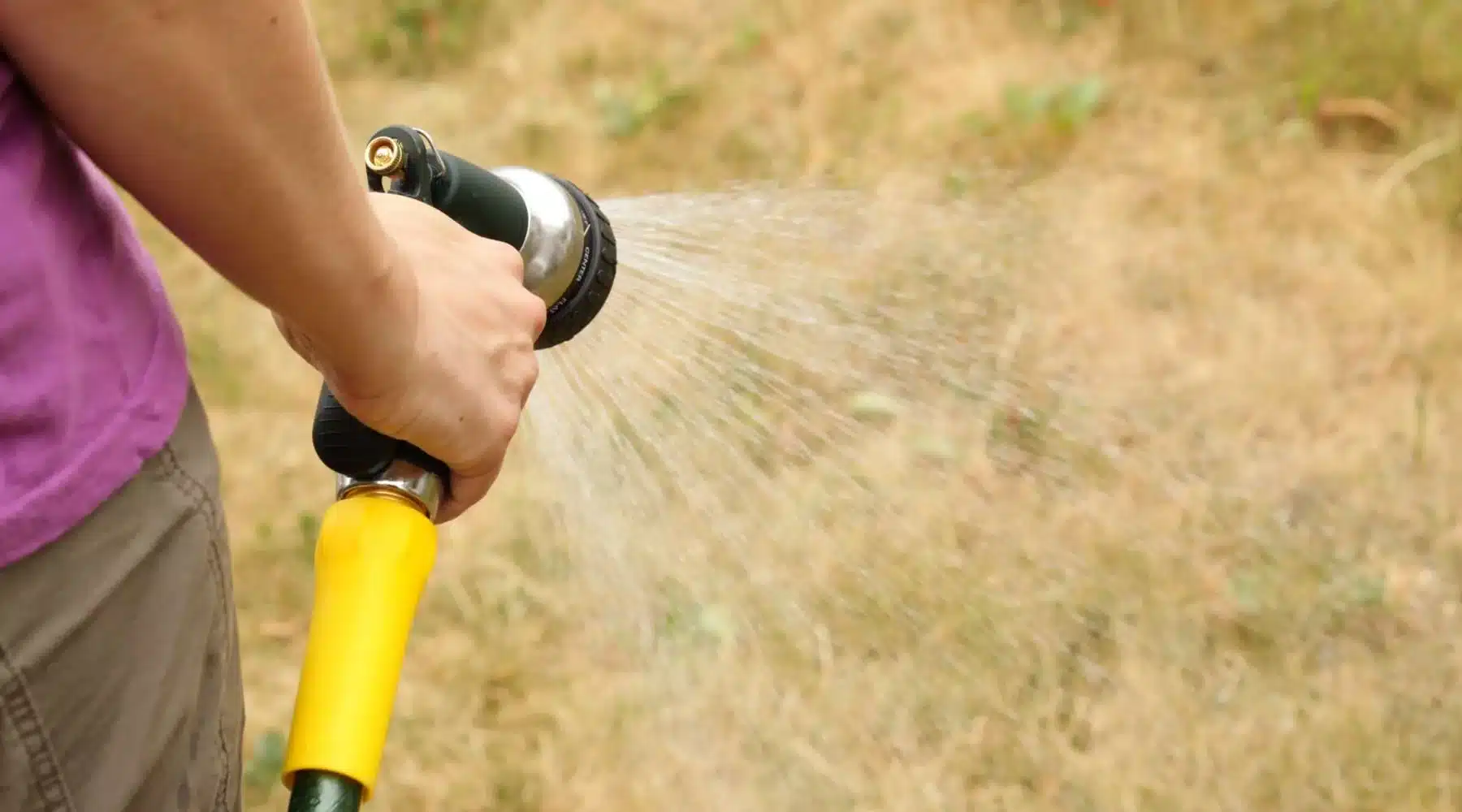I. Understanding the Causes of Dead Grass
Dead grass can be caused by various factors, and understanding the underlying causes is crucial in effectively reviving your lawn. One common cause is improper watering, either overwatering or underwatering. Overwatering can lead to shallow root growth and create a favorable environment for diseases, while underwatering can cause the grass to become dry and brittle.
Another cause of dead grass is poor soil quality. Compacted soil, lack of nutrients, and imbalanced pH levels can hinder grass growth and result in brown patches. Additionally, excessive thatch buildup, which is a layer of dead grass and organic matter, can suffocate the grass and prevent proper air and water circulation.
Furthermore, environmental factors such as extreme temperatures, excessive shade, or heavy foot traffic can contribute to the death of grass. Inadequate sunlight can inhibit photosynthesis, while constant trampling can damage the grass blades and roots.
Identifying the specific cause of dead grass in your lawn is essential for implementing the appropriate solutions. By addressing the root cause, you can effectively revive your grass and ensure its long-term health and vitality.
II. Assessing the Condition of Your Lawn
Before you can effectively revive dead grass, it’s important to assess the condition of your lawn. This will help you determine the underlying causes of the grass dying and guide your approach to restoration. Here are some steps to assess the condition of your lawn:
1. Inspect the affected areas: Take a close look at the areas where the grass has died. Look for any signs of pests, diseases, or weed infestation. This will help you identify the specific issues that need to be addressed.
2. Check the soil quality: Test the soil pH and nutrient levels to ensure they are within the optimal range for grass growth. You can use a soil testing kit or send a sample to a local agricultural extension office for analysis.
3. Evaluate the drainage: Poor drainage can contribute to grass dying. Check if water is pooling or if the soil feels excessively wet. If drainage is an issue, you may need to improve it by aerating the soil or adding organic matter.
4. Assess sunlight exposure: Grass needs an adequate amount of sunlight to thrive. Determine if the affected areas receive enough sunlight or if there are any obstructions, such as trees or buildings, blocking the sunlight. Consider pruning or removing obstacles if necessary.
5. Identify any compaction: Compacted soil can hinder grass growth. Use a soil probe or a garden fork to check for compacted areas. If you find compacted soil, consider aerating the lawn to improve air and water circulation.
By thoroughly assessing the condition of your lawn, you’ll be able to pinpoint the specific issues that have caused the grass to die. This knowledge will guide your lawn restoration efforts and help you choose the most appropriate solutions for reviving your dead grass.

III. Preparing the Soil for Grass Revival
Before reseeding your lawn, it is crucial to prepare the soil properly to create an optimal environment for grass regrowth. Here are the steps to follow:
1. Remove debris: Start by removing any debris, such as rocks, sticks, or dead grass, from the affected area. This will allow the new grass seeds to make direct contact with the soil.
2. Loosen the soil: Use a garden rake or a tiller to loosen the top layer of soil. This will help improve drainage and allow the grass roots to penetrate the soil more easily.
3. Test the soil: Conduct a soil test to determine its pH level and nutrient content. This will help you identify any deficiencies and adjust the soil accordingly. You can purchase a soil testing kit from a local garden center or send a sample to a professional laboratory for analysis.
4. Amend the soil: Based on the results of the soil test, add any necessary amendments to improve the soil quality. This may include adding organic matter, such as compost or peat moss, to enhance the soil’s fertility and structure.
5. Level the surface: Use a garden rake or a leveling tool to even out the soil surface. This will ensure that the new grass seeds are sown at a consistent depth and promote uniform growth.
6. Water the soil: Before seeding, thoroughly water the prepared soil to ensure it is moist but not saturated. This will create an ideal environment for seed germination and root development.
By following these steps, you will create a favorable environment for grass regrowth and increase the chances of successful lawn restoration. Remember to choose the right grass seed for reseeding and implement proper watering techniques to support the growth of new grass.
IV. Choosing the Right Grass Seed for Reseeding
When it comes to reviving dead grass, choosing the right grass seed for reseeding is crucial. The type of grass seed you select will depend on various factors such as your climate, soil type, and the amount of sunlight your lawn receives. Here are some important considerations to keep in mind:
1. Climate: Different grass species thrive in different climates. Determine whether you live in a cool-season or warm-season region, as this will help you narrow down your options. Cool-season grasses like Kentucky bluegrass and fescue are ideal for regions with cold winters, while warm-season grasses like Bermuda grass and Zoysia grass are better suited for areas with hot summers.
2. Soil Type: Assess the soil type in your lawn to choose a grass seed that will grow well in those conditions. Some grasses prefer sandy soil, while others thrive in clay or loamy soil. Conduct a soil test to determine the pH level and nutrient content of your soil, as this information will guide you in selecting the appropriate grass seed.
3. Sunlight Exposure: Consider the amount of sunlight your lawn receives throughout the day. Some grasses require full sun, while others can tolerate partial shade. If your lawn is shaded by trees or buildings, opt for shade-tolerant grass seed varieties such as fine fescue or St. Augustine grass.
4. Traffic Tolerance: If your lawn experiences heavy foot traffic from children, pets, or frequent gatherings, choose a grass seed that is known for its durability and ability to withstand wear and tear. Tall fescue and perennial ryegrass are popular choices for high-traffic areas.
5. Disease Resistance: Certain grass seed varieties have natural resistance to common lawn diseases. Research and select grass seed that is known for its resistance to diseases prevalent in your area. This will help ensure that your newly reseeded lawn stays healthy and vibrant.
By considering these factors and selecting the right grass seed for reseeding, you can greatly increase the chances of successfully reviving your dead grass and achieving a lush, green lawn once again.

V. Proper Watering Techniques for Grass Regrowth
Proper watering is crucial for the regrowth of dead grass. Without adequate moisture, the grass seeds will not germinate, and the existing grass will struggle to recover. Follow these watering techniques to ensure the best conditions for grass regrowth:
1. Water deeply: Instead of frequent shallow watering, water the lawn deeply to encourage the roots to grow deeper into the soil. This will make the grass more resilient and better able to withstand drought conditions. Aim for about 1 inch of water per week, either from rainfall or irrigation.
2. Water in the morning: Watering in the early morning allows the grass to dry out during the day, reducing the risk of fungal diseases. Avoid watering in the evening as the grass will remain wet overnight, creating a favorable environment for diseases to develop.
3. Use a sprinkler system or hose with a sprinkler attachment: To ensure even coverage, use a sprinkler system or attach a sprinkler to your hose. Move the sprinkler around the lawn to ensure that all areas receive sufficient water.
4. Water less frequently but deeply: Instead of watering every day, water less frequently but deeply. This encourages the grass roots to grow deeper and become more drought-tolerant. Watering deeply once or twice a week is usually sufficient, depending on the weather conditions.
5. Monitor soil moisture: Check the soil moisture regularly to determine if watering is necessary. Stick a screwdriver or a soil moisture meter into the ground. If it goes in easily and the soil feels moist, you can delay watering. If it is dry, it’s time to water.
By following these proper watering techniques, you can provide the necessary moisture for grass regrowth and ensure the long-term health of your lawn.
Implementing Effective Weed Control Methods
One of the key steps in reviving dead grass is implementing effective weed control methods. Weeds can compete with grass for nutrients, sunlight, and water, hindering its growth and recovery. Here are some strategies to help you effectively control weeds:
1. Manual Weed Removal: Start by manually removing weeds from your lawn. Use a garden fork or a weed puller to carefully uproot the weeds, ensuring you remove the entire root system. This will prevent them from regrowing and competing with your grass.
2. Mowing Height: Set your lawn mower to the appropriate height to discourage weed growth. Cutting the grass too short can weaken it and create space for weeds to thrive. Aim to keep the grass at a height of around 2-3 inches to shade out weed seeds and prevent them from germinating.
3. Regular Mowing: Maintain a regular mowing schedule to prevent weeds from going to seed. By cutting the weeds before they have a chance to produce seeds, you can reduce their spread and prevent further infestation.
4. Mulching: Apply a layer of organic mulch, such as wood chips or straw, around your grass to suppress weed growth. Mulch acts as a barrier, preventing weed seeds from reaching the soil and germinating. It also helps retain moisture and improve soil health.
5. Herbicides: If manual weed removal and other methods are not sufficient, you may consider using herbicides. Choose a selective herbicide that targets specific weeds without harming your grass. Follow the instructions carefully and apply the herbicide only to the affected areas.
6. Regular Maintenance: Consistent lawn maintenance practices, such as regular watering, fertilizing, and aerating, can help promote healthy grass growth and prevent weed infestation. A healthy and dense lawn is less susceptible to weed invasion.
By implementing these effective weed control methods, you can create an environment that is conducive to grass regrowth and minimize the competition from weeds. Remember to be patient and consistent in your efforts, as reviving dead grass takes time and ongoing care.

VII. Fertilizing Strategies for Promoting Grass Recovery
Fertilizing your lawn is an essential step in promoting grass recovery and restoring its health. By providing the necessary nutrients, you can encourage the growth of new grass and help it regain its lush green color. Here are some fertilizing strategies to consider:
1. Soil Testing: Before applying any fertilizer, it’s important to test your soil to determine its nutrient levels. This will help you choose the right type and amount of fertilizer for your lawn. You can purchase a soil testing kit from a garden center or send a sample to a professional laboratory for analysis.
2. Choosing the Right Fertilizer: Different fertilizers contain varying amounts of nitrogen, phosphorus, and potassium – the three main nutrients needed for grass growth. Look for a fertilizer with a balanced ratio of these nutrients, such as a 10-10-10 or 20-10-10 blend. Avoid using fertilizers with high nitrogen content, as they can promote excessive leaf growth and weaken the grass.
3. Applying Fertilizer: Follow the instructions on the fertilizer packaging for the recommended application rate. Use a spreader to evenly distribute the fertilizer across your lawn. Be careful not to apply too much, as this can burn the grass and cause further damage. Water your lawn immediately after fertilizing to help the nutrients penetrate the soil.
4. Timing: The best time to fertilize your lawn for grass recovery is during the active growing season. This is typically in the spring and fall when the temperatures are moderate. Avoid fertilizing during periods of drought or extreme heat, as the grass may not be able to absorb the nutrients effectively.
5. Regular Maintenance: Fertilizing is not a one-time solution. To maintain a healthy lawn, you should fertilize regularly according to the needs of your grass. Follow a fertilization schedule based on the type of grass you have and the recommendations for your region.
By following these fertilizing strategies, you can provide your grass with the nutrients it needs to recover and thrive. Remember to always read and follow the instructions on the fertilizer packaging for best results.
VIII. Aerating the Soil to Improve Grass Health
Aerating the soil is an essential step in reviving dead grass and promoting its overall health. Over time, the soil in your lawn can become compacted, making it difficult for grass roots to penetrate and access essential nutrients and water. Aerating the soil helps to alleviate compaction and create channels for air, water, and nutrients to reach the grassroots.
There are several methods you can use to aerate your lawn, including manual aerators, spike aerators, and core aerators. Manual aerators are handheld tools with hollow tines that you can use to manually create holes in the soil. Spike aerators have solid tines that puncture the soil, while core aerators remove small plugs of soil from the ground.
When aerating your lawn, it’s important to ensure that the soil is moist but not overly wet. This will make it easier for the aerator to penetrate the soil. Start by marking any underground utilities to avoid damaging them during the aeration process. Then, systematically go over your lawn, making sure to cover the entire area.
After aerating, leave the soil plugs on the surface of the lawn. These plugs will break down over time and help to improve the soil structure. You can also rake them into the grass to help distribute the soil and organic matter.
Aerating your lawn should be done at least once a year, preferably in the spring or fall when the grass is actively growing. This will give the grass ample time to recover and fill in any bare spots. Regular aeration will also improve the overall health of your lawn, making it more resistant to drought, disease, and pests.
By aerating the soil, you are providing your grass with the best possible conditions for growth and recovery. Combined with proper watering, fertilizing, and weed control, aerating will help you achieve a lush and healthy lawn that you can enjoy for years to come.
IX. Protecting Your Lawn from Pests and Diseases
One of the key factors that can contribute to the death of grass is the presence of pests and diseases. These unwanted visitors can wreak havoc on your lawn, causing damage and further weakening the already struggling grass. Therefore, it is crucial to take proactive measures to protect your lawn from pests and diseases.
Firstly, regular inspection of your lawn is essential to identify any signs of pest infestation or disease. Look out for brown patches, chewed grass blades, or unusual growth patterns. If you notice any of these signs, it is important to take immediate action.
One effective method to protect your lawn from pests is to practice proper lawn maintenance. This includes regular mowing, watering, and fertilizing. Keeping your grass at the appropriate height and providing it with the necessary nutrients will help it stay healthy and resilient against pests and diseases.
In addition, consider using natural pest control methods such as introducing beneficial insects or using organic pesticides. These methods can help control pests without harming the environment or the health of your lawn.
Another important aspect of pest and disease prevention is proper irrigation. Overwatering can create a favorable environment for pests and diseases to thrive. Therefore, it is crucial to water your lawn deeply but infrequently, allowing the soil to dry out between watering sessions.
Furthermore, removing any debris or thatch buildup from your lawn can also help prevent pests and diseases. These materials can provide hiding places for pests and create a breeding ground for diseases. Regularly rake or dethatch your lawn to keep it clean and free from potential threats.
Lastly, consider consulting with a professional lawn care service or an expert in pest and disease control. They can provide you with tailored advice and solutions based on the specific needs of your lawn.
By taking proactive measures to protect your lawn from pests and diseases, you can ensure the long-term health and vitality of your grass. Regular maintenance, proper irrigation, and the use of natural pest control methods will help create a resilient and thriving lawn.
